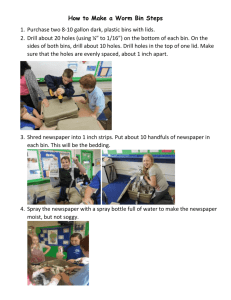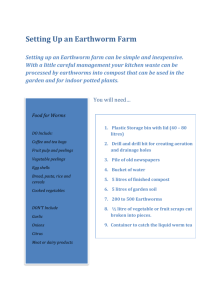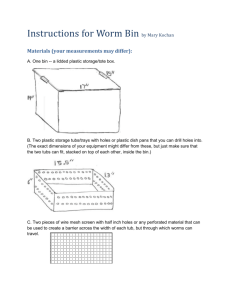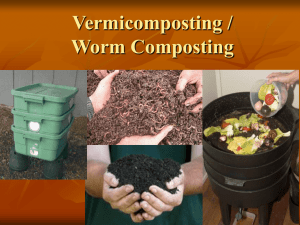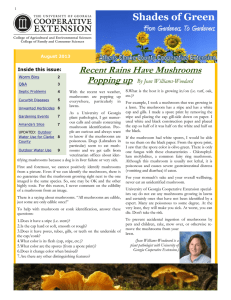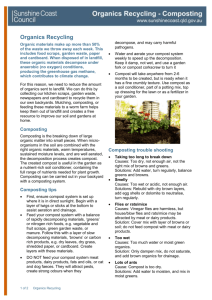Lesson 2
advertisement
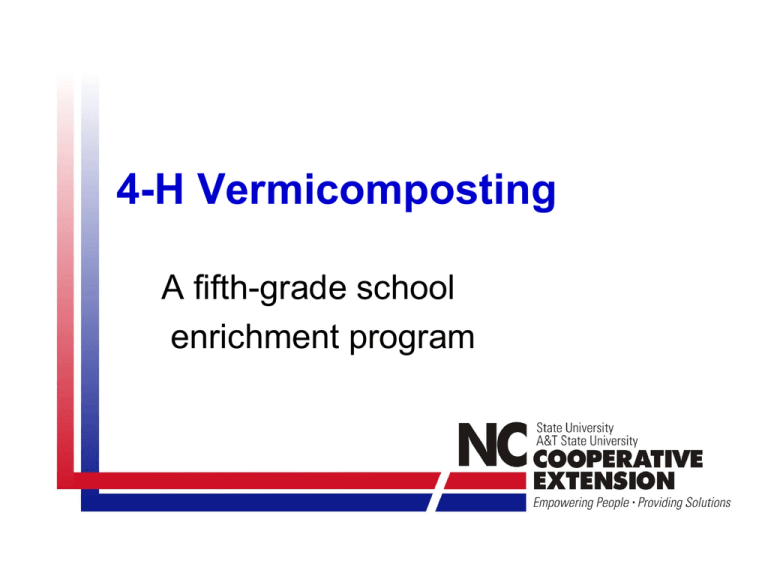
4-H Vermicomposting A fifth-grade school enrichment program Lesson 2: Setting Up a Worm Bin • Objectives – How to set up and maintain a worm bin • Review – What is vermicomposting? – How do castings help soil and plants? Contents of a Worm Bin • Earthworms • Shredded paper as bedding • Handful of soil • Food scraps such as vegetables, fruits, coffee grounds, and eggshells Worm Bin Construction and Storage • Worm bin should be made of plastic or untreated wood • Drill holes along top sides of bin to provide air for worms and in bottom for drainage • Keep worm bin where temperature is between 55° and 77° Fahrenheit Worm Bin Bedding • Composed of shredded black and white newspapers, paper, bags, and cardboard • Do not use glossy paper or magazine pages! How Do We Prepare the Bedding? • Soak in water about 20 minutes – Wring it out like a sponge – Fluff it up before putting in bin • Fill bin 1/3 to ½ full with bedding • Keep bedding moist • Mist dry bedding if needed • Add more bedding as it disappears Do’s and Don’ts of Food in the Worm Bin Do add Don’t add Fruits and vegetables Meat, fish and dairy products Coffee grounds Bones and grease Eggshells Pet waste • Meat, fish & dairy attract pests, and grease can coat the skin of worms, preventing them from breathing •Add up to ½ pound of food scraps per day if have 1 pound of worms Do Not Forget! • ALWAYS cover food with bedding • Make sure 2 to 3 inches of bedding cover food at all times These steps help prevent fruit flies, mold, and odors Worm Bin Record Bury food scraps in a different place each week so they don’t pile up in one area. Label top of worm bin with numbers to designate where food will be buried each week 1 2 3 4 5 6 7 8 9 Date Oz. of Food Scraps Temp Burying Location Comments 9/1 8 68 Set up worm bin. Added bedding and food scraps. #1
